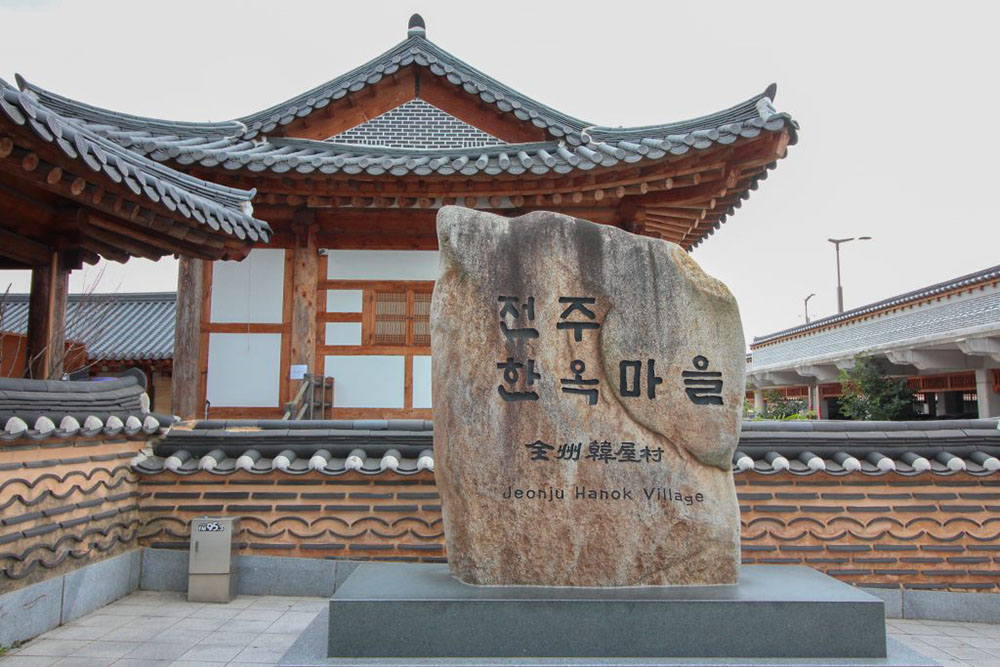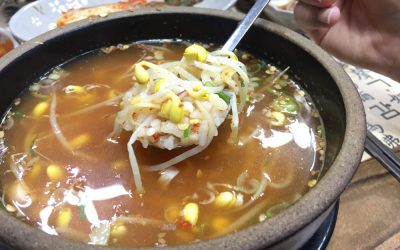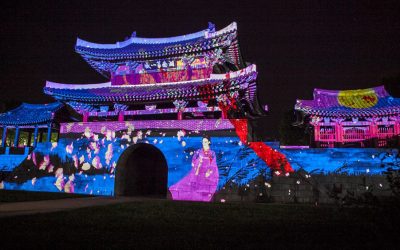“How Many Have You Checked-Out?” The Top Ten Landmarks of Jeonju

“How many among these have you checked-out in Jeonju?”
Jeonju is usually known as the gourmet city of Korea but, the city also boasts abundant histories, traditions, and impressive tourist spots. So, while it must be fun to create your own food guide to Jeonju, taking photos to commemorate the visit in front of Jeonju’s famous landmarks has its own charm.
Pictures taken in front of landmarks which represent the cities will continue to remind you of the cherished memories for a long time. Before leaving for Jeonju, let’s preview Jeonju’s ten landmarks to make sure you don’t miss any one of them for the photographic time-stamps!
Do keep these landmarks in mind, since they represent Jeonju. One day, photos from these spots will help you reminisce of your travel.
‘Gyeonggijeon Palace,’ the historic symbol to half a millennium of Joseon Dynasty

‘Gyeonggijeon’ is probably what first comes into mind when people hear about Jeonju. The place was built in 1410, during the reign of King Taejong (the 3rd King of Joseon Dynasty), to enshrine the portrait of Taejo (the founder of Joseon Dynasty) and perform the royal ancestral rites. Inside Gyeonggijeon are ‘Jeonju Sago,’ the archive that housed the Annals of Joseon Dynasty, and ‘the Royal Portrait Museum,’ exhibiting portraits of the kings of the dynasty and other relevant relics. Gyeonggijeon is loved by both locals and tourists because of its history spanning over 500 years and also of the lush trees providing places to rest in the bustling inner city.
‘Jeondong Cathedral,’ the living witness to the history of Korean Catholicism.

The first thing the tourists will see when they get off at the Hanok Village bus stop is the high-rising building of ‘Jeondong Cathedral.’ Known for its red bricks and exotic architecture, the cathedral is considered one of the most beautiful cathedrals in Korea. The cathedral is built on the site of the first Catholic martyrdom in Korea, and the place became the parish church that launched the Catholic missionary over the southwestern region of Korea. In front of the cathedral are the statue of Jesus Christ and the monument commemorating the martyrdom that testify the history of Catholicism in Jeonju. A Romanesque cathedral encompassing both eastern and western architectural style, Jeondong Cathedral is a popular spot for photo shoots. The photo of yourself wearing hanbok in front of the cathedral will be a fond memory of your trip to Jeonju.
‘Pungnammun Gate,’ the gate that survived time

‘Pungnammun’ is the south gate of the wall surrounding Jeonju. There used to be four gates, but Pungnammun is the only surviving one, currently designated as Treasure No. 308.
The gate was originally constructed during Koryo Dynasty (before Joseon Dynasty), but was destroyed by fire amid the Japanese Invasion of 1597. The gate was rebuilt in 1768, when it was named Pungnammun. With its eight-angled roof with twofold eaves, the architectural value of the gate is very high.
Have you heard of the night-view of Punggnammun? The media façade show ‘Pungnammun Wears the Light’ is staged twice every Friday at 9PM and 9:30PM. Themes celebrated by the show include the Annals of Joseon Dynasty, 2017 U-20 World Cup, and many others. When you visit Jeonju, don’t forget to stop by Pungnammun for the show!
‘Jeonju Hyanggyo Confucian School,’ the center of regional education in Joseon Dynasty

‘Jeonju Hyanggyo,’ a Confucian school, is Joseon Dynasty’s educational institution corresponding to the current junior-high and high school. Built during Koryo Dynasty, in 1354, the school boasts around 650 years of history and tradition. Currently, there remains Daeseongjeon (building enshrining the memory tablet of Confucius), Gyeseongsa (building enshrining the memory tablet of the father of Confucius), Myungryoondang (the lecture hall), Dongjae and Seojae (dormitories), and others. The two gingko trees in front of Daeseongjeon are around 400 years old and are protected by law. Because gingko trees chase away insects, the trees planted in the Confucian school are to wish the students to become righteous people. Every year, Jeonju Hyanggyo offers traditional cultural programs such as ‘etiquette school,’ so you can check out the schedule at the homepage.
‘Hanbyeokdang Pavilion,’ a splendor in harmony with nature

Slightly away from the bustling streets to walk along the stream, you will come across ‘Hanbyeokdang,’ a pavilion built over the cliff. In the past, the fog colliding against and scattering around the cliff was called ‘Hanbyeok-chungyeon,’ and named one of the eight wonderful sights of Jeonju. During Joseon Dynasty, Hanbyeokdang was a place where Confucian students composed poetry and children catch fish in the stream. Nowadays, it is a resting place for locals and tourists with shade and cool breeze. Also, next to Hanbyeokdang is Jeonju Natural Ecology Museum representing the natural habitats around Jeonjucheon stream area. (Currently, the museum is closed due to renovation, so you might want to find out the re-opening date before visiting.)
‘Cheongyeonru Pavilion,’ a resting spot connecting Hanok Village and Seohakdong district

‘Cheongyeonru’ is the pavilion built in the middle of the ‘Namcheongyo,’ a bridge connecting Hanok Village and Seohakdong district. With a view open to all directions, ‘Cheongyeonru’ is a resting place for locals and tourists. Named after ‘Hanbyeok-cheongyeon,’ at the pavilion, you will enjoy the cool breeze and shade during the daytime and illumination lighting up the area during the evening.
‘Nambu Market & Chungnyun Mall,’ a harmony of traditional market and youth


The source of energy and vividness of Jeonju is Chungnyun (meaning ‘young people’ in Korean) Mall, located on the second floor of Nambu Market. With the culture and tourism ministry’s support, Chungnyun Mall opened in 2012 with twelve stores which are all run by young people.
Chungnyun Mall, a space for young people, became a role model for not only Jeonju but also Korea-wide. Each store in the mall are unique on their own with different stories to tell. You will feel your heart warmed from the entering stairs of the mall.
Chungnyun Mall on the second floor would not have been so successful were it not for the traditional Nambu Market on the first floor. The market is replete with history and lively everyday life of the locals. A popular night market, held at the market every Friday and Saturday, must not be missed!
‘Jaman Mural Village,’ a beautifully colored shantytown

A popular photo spot for those visiting Jeonju is ‘Jaman Mural Village.’ You will be surrounded by beautiful murals from the beginning of the village. From the scenes of famous movies and comics to parodies of traditional paintings, the murals will make you take the village for a different world. You won’t be able to stop taking photos!
Also, hidden around the village are the stores selling unique souvenirs, so do take a closer look when you walk around or you might miss them. 🙂
‘Deokjin Park,’ Jeonju’s source of pride

Away from Hanok Village is ‘Deokjin Park’ where children play over wide green grass. Most of all, the park is famous for Deokjinho Lake covered with lotus which is also named one of the eight wonderful sights of Jeonju. When lotus bloom in summer, the scent of the flower fills the entire park.
The park is a romantic location for both locals and tourists, so don’t miss visiting the Deokjin Park!
‘Jeonju Station,’ the starting point of an exciting visit

For many tourists arriving at Jeonju Station, the place is filled with excitement. As you step outside the hanok-style building of the station, you will instantly want to take a photo to commemorate your arrival at the city of Korean culture and tradition.

As one of the landmarks representing the city, Jeonju Station welcomes the travellers. I invite you to leave your footprints around the landmarks of Jeonju, and wish your visit to be filled with happy memories.




최신 댓글